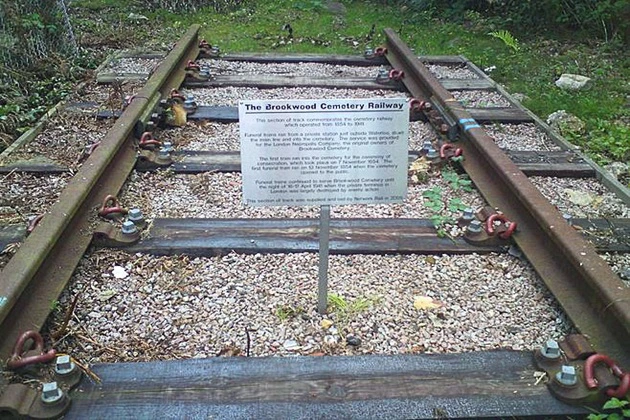An unusual train left London on the same day for almost a century. Its passengers were waiting for “boarding” in the usual waiting rooms of a large railway station and moved in first, second, and third-class carriages. As they say, according to the purchased tickets.
From the point of departure at Waterloo Station, beautiful landscapes flashed through the windows: Richmond Park, Westminster, Hampton Court. It is a highly picturesque route, which is surprising considering the specifics of the flight. After all, the passengers were overwhelmingly dead.
Crowded city cemeteries
At the beginning of the 19th century, London was gripped by the problem of burying the dead. The existing cemeteries were overcrowded, and it became impossible to open new ones due to the density of buildings and the high cost of land. And burying the dead near residential buildings is a dangerous business. Cadaveric poisons through groundwater could cause epidemics.
Everyone understood that organizing a cemetery outside the city and as far away as possible was urgently necessary. But this stick had two ends. The greater the remoteness of the burial sites, the more expensive such a trip was at that time. Not everyone could afford to arrange a funeral ceremony 20 miles from London.
The only solution could be the mass removal of corpses. The train was considered the most inexpensive and roomy form of transport. However, conservative British society was in no hurry to take such an extravagant approach to a sensitive issue. Visit. A F R I N I K . C O M For the full article. In 1842, Parliament rejected such an idea under pressure from Bishop Charles Blomfield of London. Too little time had passed since the opening of the first railway, and this type of movement was still perceived as an attraction. And mixing funerals with entertainment seemed immoral.
The cholera epidemic in 1848-1849 prompted the government to take radical measures. Over 15,000 Britons have died in London in a matter of weeks. Funeral services could not cope with the volumes. The dead were buried and immediately piled up right next to the churches. It is clear that all this entailed a stench and posed a threat of spreading the infection.
To the cemetery by train
Entrepreneurs Richard Brown and Richard Spry took the initiative to resolve the issue at the expense of the railway. They emphasized that they would solve the problems of the masses, not just the well-off citizens. The authors of the idea developed a competent plan for constructing a cemetery. They stated that it can forever accommodate all London residents’ remains. Well, it was proposed that mourners and coffins be delivered to Londoners by a fast and accessible railway.
In 1852, the London Necropolis and National Mausoleum Company was founded, which began constructing a cemetery 23 miles southwest of London in Surrey. 2 years later, the cemetery started working. He was named Brookwood, and the advertisement, in the spirit of the new age, praised “trees, flowers and winding paths that diversify the view” and the territory “cleaned with maximum attention to order.” American redwood trees were planted along the paths in Brookwood, and the 500-acre area made it possible to avoid anyone’s eyes and get lost in the vastness of the cemetery.
Burying relatives in Brookwood has become available even to representatives of the working class. The train ride was much faster and cheaper than the horse-drawn hearse, and the site was much less expensive than its urban counterparts. Mourning in the bosom of well-groomed nature has ceased to be the prerogative of the London elite. The Brookwood cemetery was divided into sections depending on social stratum and religion.
They did not confuse Anglicans with “anti-conformists.” In general, even grief had its social order. Another feature of the new railway line is the roadside morgues. At Waterloo Station, along with several lobbies for the lower and upper classes, waiting rooms, and platforms, refrigerators for corpses were equipped in case of an unforeseen train delay.
Cancellation of the “flight of death”
The unusual railway remained in operation for almost a century but did not achieve its long-term goals. Brookwood received 200,000 bodies, although it was planned to be much more significant. At the initial calculations, it was about 5 million burials. Everything has changed due to the popularization of motorized vehicles, which have replaced urban horse-drawn carriages. On the eve of the 20th century, Parliament passed several laws that streamlined city cemeteries and obliged officials to provide places for burial voluntarily. In the 1900s, cremation also began to gain popularity.
The already modest fare on the “train of death” had to be reduced. Even the price for first-class delivery of the body stopped covering the costs of the London Necropolis and National Mausoleum Company. It reached the point that golfers in black suits came to the Brookwood courses as if in mourning clothes.
Starting in September 1940, German bombers carried out regular destructive raids on London for several months. For the first 57 days, as part of Operation Blitz, the city was bombed every night. Damage to the railway track interrupted the movement of trains, and the London Necropolis Railway was no exception.
The last funeral flight took place on April 11, 1941. The constant heavy bombardment soon destroyed the railway and the surrounding buildings. The management company sold off huge unused plots of Brookwood land to stay afloat. The remains of the iron sheet were dismantled, making room for pedestrians and cars. The pub at Cemetery Station was the only institution involved in Brookwood that existed for many more years.
After a long period of complete desolation, by the 1970s, the cemetery had climbed out of oblivion and began to receive processions again. Brookwood operates to this day, remaining the largest cemetery in the United Kingdom. A short section of railway tracks, a memorial plaque, and a cemetery street, Railway Avenue, preserve the memory of a long-standing innovative idea.
